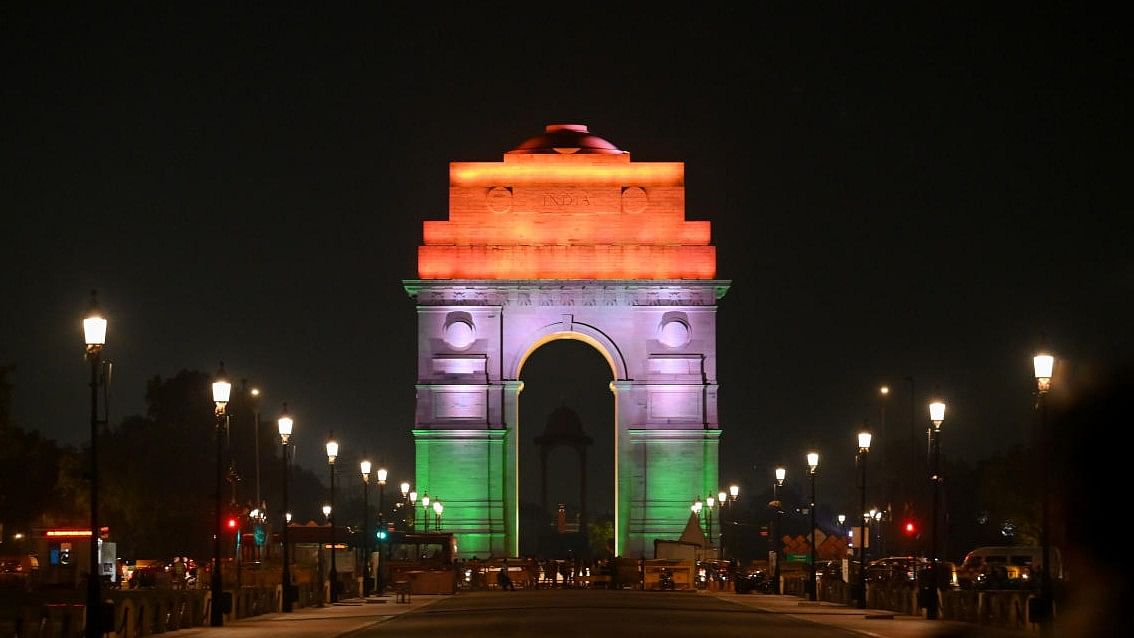
India Gate illuminated with tri-coloured lights as part of 'Azadi ka Amrit Mahotsav' celebrations, on the eve of 76th Independence Day, in New Delhi.
Credit: PTI Photo
New Delhi: India’s Human Development Index (HDI) value in 2022 has increased to 0.644 from 0.633 in 2021, placing it 134th out of 193 countries, as per the Development Report (HDR) released on Thursday. India’s Gender Inequality Index (GII) value of 0.437 is better than the global average of 0.478. The HDI value places India in the medium human development category.
The report, Breaking the Gridlock: Reimagining Cooperation in a Polarized World, showed that the global HDI value fell for the first time in two years in a row. This report also revealed that while rich countries achieved record human development, half of the poorest remain below their pre-crisis level of progress.
“In 2022, India saw improvements across all HDI indicators — life expectancy, education, and Gross National Income (GNI) per capita,” the UNDP said in a release.
In India, life expectancy rose from 67.2 to 67.7 years, expected years of schooling reached 12.6, which means that years of schooling increased to 6.57, and GNI per capita saw an increase from $6,542 to $6,951.
“India has shown remarkable progress in human development over the years. Since 1990, life expectancy at birth has risen by 9.1 years; expected years of schooling have increased by 4.6 years, and mean years of schooling have grown by 3.8 years. India's GNI per capita has grown by approximately 287 percent. This highlights the country’s commitmen,” Caitlin Wiesen, Resident Representative at UNDP India said.
India’s GII value places it 108th out of 166 countries. The GII measures gender inequalities in three dimensions – reproductive health, empowerment, and labour market. India’s GII value was highter than the global average of 0.462 and the South Asian average of 0.478.
India's adolescent birth rate in 2022 was 16.3 (births per 1,000 women ages 15-19), an improvement from 17.1 in 2021. However, India also has one of the largest gender gaps in the labour force participation rate — a 47.8 per cent difference between women (28.3 per cent) and men (76.1 per cent).